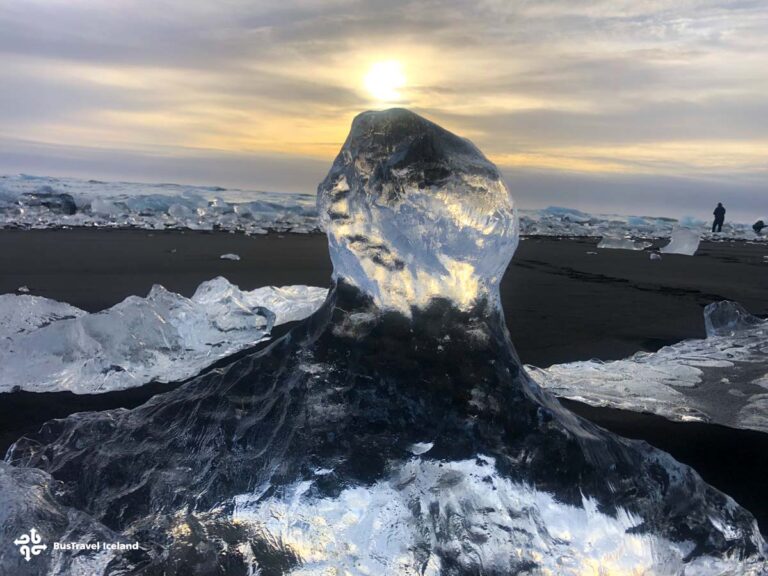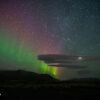3 Day Golden Circle, South Coast & Glacier Lagoon Small-Group Tour

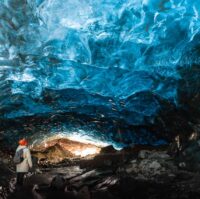



Enjoy 3 days in Iceland, with our wonderful year round small-group tour, and explore the best that the Golden Circle and South Iceland have to offer. Visit both hot-spots and lesser known gems, as your expert guide takes you on a journey of discovery.
Over the course of this tour you will see the erupting Geysir, cascading waterfalls such as Gullfoss and Seljalandsfoss, Ice Diamond stewn volcanic black sand beaches and more. Switch to a high-octane super jeep and venture onto a glacier in search of crystal ice caves.
In the evenings in Autumn, Winter and Spring, should atmospheric conditions cooperate, we will also seek out the legendary green shimering northern lights for which Iceland is rightly renowned.
Included with your tour is comfortable accommodation at a cosy countryside hotel for 2 nights. Get to know your fellow passengers on this intimate small-group tour.
On day 1 we explore the greatest hits of the Golden Circle route, with stops at Thingvellir national park, Geysir, and more. We also make a head start on the south coast by ending our day at Reynisfjara blacks sand beach.
Day 2 sees a day of glacier action, with the icebergs at Jökulsárlón, the ice strewn Diamond Beach, and of course our visit to a natural ice cave. In winter, we explore Vatnajökull glacier, Europe´s largest. In summer, we check out Katla Ice Cave on Mýrdalsjökull glacier instead.
Day 3 is waterfall day, with Skógafoss and Seljalandsfoss waterfalls the highlights.



Tour highlights & itinerary
For our 3-day Iceland Tour, we plan to base strategically base ourselves at a well located comfortbale hotel. We provide a variety of room options. All rooms come with private bathrooms (ensuite) and complimentary Wi-Fi. Additionally, you’ll often find amenities like hairdryers and kettles, ensuring a comfortable stay amidst Iceland’s stunning landscapes.
Each morning, enjoy a diverse continental buffet breakfast with fresh, locally sourced ingredients, providing a delightful taste of Nordic cuisine amidst breathtaking natural scenery.
During winter journeys through Iceland, hotels offer a Northern Lights wake-up service, allowing you to catch this mesmerizing natural phenomenon. You can also inquire about this service at the front desk of most hotels. It’s an Icelandic winter highlight you definitely won’t want to miss!




- Expert English speaking driver-guide and minibus
- Pick up and drop off from various location in Reykjavik
- Wifi on board
- Optional Ice cave tour - Katla ice cave in summer / Crystal ice cave in winter, and ride on our Super jeep to the ice cave
- Accommodation with breakfast for 2 nights
- Food & drinks
- Warm, water- and windproof outdoor clothing
- Good sturdy hiking boots
- Gloves and hat
- Cancellation Policy for Multi-Day Tours & Packages:
Multi-Day Tours are all scheduled group tours that include accommodation and packages are day tours sold together with accommodation.
All cancellations from customers should be notified via email to info@bustravel.is.- ‣ 100% refund of the tour price, if canceled 7 days or more prior to the starting time of the tour.
- ‣ 50% refund of the tour price, if canceled 7 days or less prior to the starting time of the tour.
- ‣ No refund is given if canceled 48 hours or less prior to the starting time of the tour.
- Hotels & single supplement fee: Customers traveling alone If you don´t pay the Single room fee, you might be paired with another solo traveler of the same gender in a twin room.
- Northern Lights: We will do our best to see the aurora during your time with us, but nature does not always play along. Aurora season is September to early April.
- Ice caves are dynamic natural wonders. The actual view of the ice caves during your visit might differ from the photographs, as they continuously change and evolve. Their appearance can vary due to factors like the season, time of day, lighting, and more.
Travelers reviews
Write a review
Share your experience with others.
Itinerary
Itinerary
 Reykjavik
ReykjavikAt 8 a.m. on the first day, our exciting adventure starts in Reykjavík. With everyone aboard and ready, we’ll head out to explore the awe-inspiring beauty of Iceland’s South Coast.

1 Day 1 - South IcelandAs we travel toward the beautiful South Coast, we’ll stop to enjoy some of the area’s most breathtaking views. After a fulfilling day, we have a peaceful night’s rest at a cozy hotel—all included in your tour package.

2 Seljalandsfoss WaterfallAs we make out way westwards back towards the city lights, we have one more natural wonder to share with you; one of Iceland´s most treasured waterfalls, Seljalandsfoss waterfall. Seljalandsfoss is especially famed for the unique walking path that winds its way behind the waterfall. Make sure to wear your rain gear if you choose to take the path as you will get wet, but that is a small price to pay to see the falls from that unusual viewpoint.
If you prefer to stay dry, the falls are equally spectacular from the front.

3 Skogafoss WaterfallThe mighty Skógafoss waterfall, plunging 60 meters down a dramatic cliff, is one of Iceland’s most iconic natural wonders. Take in its beauty from the base, or—if you’re feeling adventurous—climb the 430+ steps to the viewing platform at the top. From there, you’ll be treated to sweeping views of the South Coast and, when the weather cooperates, a glimpse of the far-off Westman Islands.

4 Northern Lights Discovery - September to March onlyAs we make our way to the hotel, the 1st night you will stay in an accommodation located in South East Iceland.
On your way, your guide will check the forecast for the Northern Lights. If the skies look clear, we could be in for an unforgettable show! Your guide will point out the best nearby spots for viewing, and with our hotel tucked away from city lights, we’ll have an excellent chance of seeing the aurora in all its glory.
We don´t control the aurora of course, and if prospects are bleak we will instead just take it easy at the hotel. Please note that the prime Northern Lights viewing season typically spans from September to March.

5 Day 2 - Glacier Adventure and the Glacier LagoonOur second day is packed with excitement and natural wonders!
We’ll start at the magical Jökulsárlón Glacier Lagoon, where massive icebergs drift gracefully across shimmering blue waters. Just steps away lies Diamond Beach—its name inspired by the glistening ice crystals that sparkle on the black sand.
Later, we’ll explore Reynisfjara Black Sand Beach, one of Iceland’s most mesmerizing and otherworldly landscapes.
It’s a day guaranteed to leave you amazed and inspired!

6 Optional Ice Cave ExplorationNote: You can add this optional Ice Cave tour when booking. You can also ask your guide to add this for you, and we will do our best to squeeze you in, subject to availability.
Exploring a natural ice cave is a must when visiting Iceland. Prepare to be amazed at the Blue Ice Cave, where the winter ice glows in dazzling shades of blue. Explore glittering tunnels and frozen chambers, discovering the hidden beauty of Iceland’s glaciers. With knowledgeable guides and proper safety gear, this is an adventure that’s both safe and unforgettable.
Please note that the ice caves are constantly changing, and we can not guarantee that it will be exactly as the pictures show on this tour page. We will select the ice cave with the best accessibility at the time of your visit.

7 Jokulsarlon Glacier LagoonJökulsárlón glacier lagoon is one of Iceland´s top attractions. Here Europe´s largest glacier Vatnajökull meets the sea. Enormous masses of ice calve off the glacier and gradually float through the lagoon out to sea.
From April to October, one can take a boat tour on the lagoon and see the icebergs up close.

8 Diamond BeachOnce the icebergs from Jökulsárlón reach the sea, they are taken by strong waves and break down into smaller pieces. These ice pieces wash ashore before they are retaken by the waves. This process repeats, until eventually the pieces break down completely. But we can enjoy the spectacle of thousands of chunks of ice of various sizes sparkeling in the daylight, in contrast to the sheer black sands of the beach. Little wonder that this is popularly known as the Diamond Beach.

9 VikThe charming fishing village of Vík is home to about 300 hardy souls who brave the harsh winds year round. It has become a popular stop for travelers of the southern coastline.
It is also home to spectacular views of the sea cliffs and basalt sea stacks in the distance. Take a stroll on the black sand beach and grab some photos of the cliffs in the distance.

10 Reynisfjara Black Sand BeachOur last stop of the day is to the magical black sands of Reynisfjara beach. Here the harsh waves of the icy-cold north Altantic crash across the stunning geometric basalt columns of the high cliffs. Explore the caves in the cliff, but beware the danger of the sneaker waves.
In the waves is the distance you will see the distinct shapes of Reynisdrangar sea stacks.

11 ReykjavkAfter our captivating journey, we’ll commence our return trip to Reykjavik, and should be back by the early evening, although this may vary depending on prevailing weather conditions and the state of the roads. Your accommodation for the 2nd night will be in Reykjavik city center.

12 Day 3 - Golden CircleThe Golden Circle is Iceland´s most popular travel route. Diverse landscapes and wonderous geological features dot this region.

13 Thingvellir National ParkOur first stop is at Thingvellir National Park, a UNESCO World Heritage site of great historical and geological significance.
Thingvellir is most famous at the location of the mid-Atlantic ridge, where the North American and Eurasian tectonic plates separate and drift further apart with each passing year. This manifests itself most stunningly with Álmannagjá, a massive rift through which one can stroll, with sheer vertical walls to each side.
For Icelanders though, this site means more than natural beauty. Thingvellir is the site of Iceland´s first parliament, wehich first met here over 1000 years ago. Indeed, the name “Thingvellir” itself translates to “Parliament Plains,” underscoring its important role is the nation´s development.

14 Geysir Geothermal AreaMuch of south-west Iceland is teeming with underground geothermal spots. It is necessary to bore deep into the ground to harness this energy. At Geysir though, the geothermal hot-springs manifest on the surface in many wondeful ways, including bubbling mud-pools and hot-pots. The most famous maifestation of this natural power though is of course the geyser itself. Strokkur geyser can be relied upon to erupt on cue every 5-10 minutes, ensuring you will have time to witness several eruptions during your visit.

15 Gullfoss WaterfallGullfoss is an immensely powerful waterfall on the glacial river Hvítá, fed by the looming Langjökull glacier to the north. It features a striking two-tiered drop: the upper falls plunging 11 meters (36 feet) and the lower tier dropping 21 meters (69 feet). Together, they create a powerful, staircase-like cascade.

16 Friðheimar Greenhouse and Horse FarmFriðheimar Farm is renowned for both its greenhouse and horse stables. Your visit begins at the farm’s famous stables, where you’ll meet the unique Icelandic horse. Known for their small stature, strength, and lively temperament, these remarkable horses will be showcased as your hosts demonstrate the five distinctive gaits that make this breed so special.
Next, you’ll explore the farm’s innovative greenhouse, which highlights Icelanders’ clever use of geothermal energy. Powerful sun lamps allow a variety of tomatoes to thrive despite the country’s famously harsh conditions. During a guided tour, you’ll learn about this fascinating process in an engaging and informative way. Afterwards, you’ll have the opportunity to taste the fresh produce and enjoy a leisurely lunch at your reserved table.
Please note: lunch is not included in the tour price.
 Reykjavík
ReykjavíkAfter a day full of adventure, we make our way back to Reykjavík.













































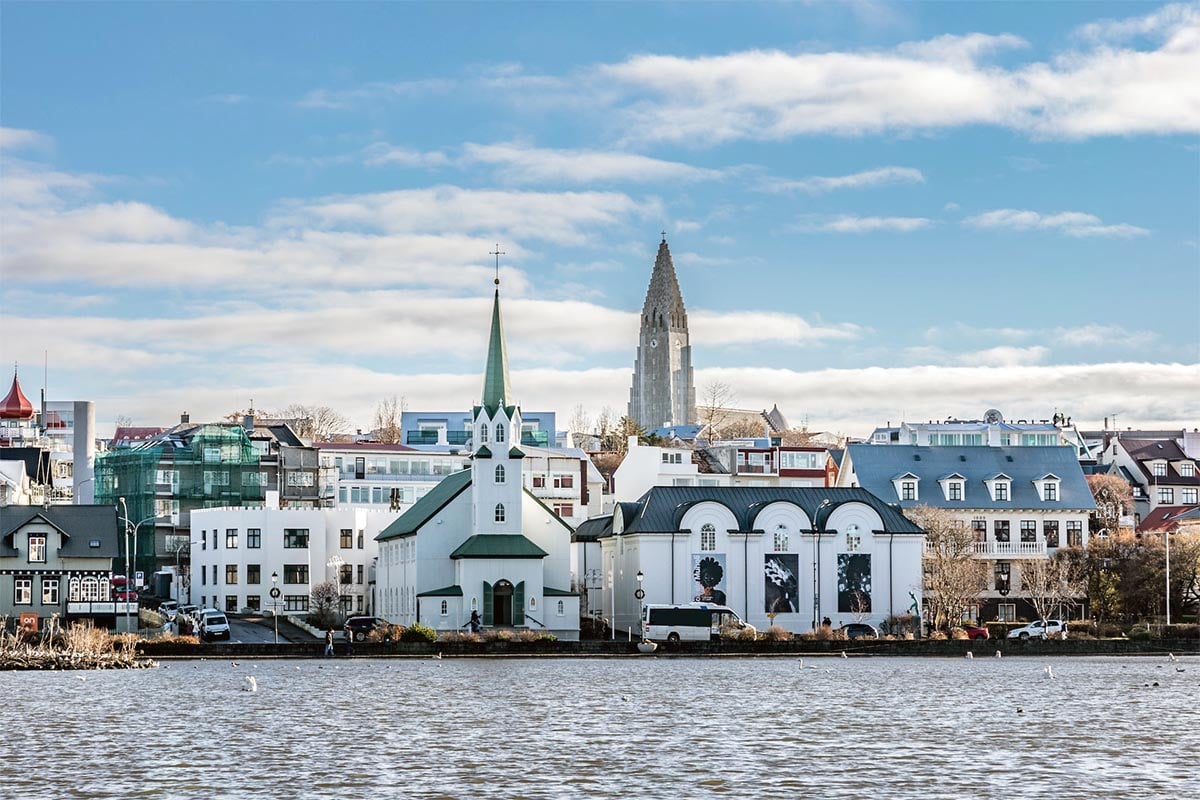
At 8 a.m. on the first day, our exciting adventure starts in Reykjavík. With everyone aboard and ready, we’ll head out to explore the awe-inspiring beauty of Iceland’s South Coast.

As we travel toward the beautiful South Coast, we’ll stop to enjoy some of the area’s most breathtaking views. After a fulfilling day, we have a peaceful night’s rest at a cozy hotel—all included in your tour package.

As we make out way westwards back towards the city lights, we have one more natural wonder to share with you; one of Iceland´s most treasured waterfalls, Seljalandsfoss waterfall. Seljalandsfoss is especially famed for the unique walking path that winds its way behind the waterfall. Make sure to wear your rain gear if you choose to take the path as you will get wet, but that is a small price to pay to see the falls from that unusual viewpoint.
If you prefer to stay dry, the falls are equally spectacular from the front.

The mighty Skógafoss waterfall, plunging 60 meters down a dramatic cliff, is one of Iceland’s most iconic natural wonders. Take in its beauty from the base, or—if you’re feeling adventurous—climb the 430+ steps to the viewing platform at the top. From there, you’ll be treated to sweeping views of the South Coast and, when the weather cooperates, a glimpse of the far-off Westman Islands.

As we make our way to the hotel, the 1st night you will stay in an accommodation located in South East Iceland.
On your way, your guide will check the forecast for the Northern Lights. If the skies look clear, we could be in for an unforgettable show! Your guide will point out the best nearby spots for viewing, and with our hotel tucked away from city lights, we’ll have an excellent chance of seeing the aurora in all its glory.
We don´t control the aurora of course, and if prospects are bleak we will instead just take it easy at the hotel. Please note that the prime Northern Lights viewing season typically spans from September to March.

Our second day is packed with excitement and natural wonders!
We’ll start at the magical Jökulsárlón Glacier Lagoon, where massive icebergs drift gracefully across shimmering blue waters. Just steps away lies Diamond Beach—its name inspired by the glistening ice crystals that sparkle on the black sand.
Later, we’ll explore Reynisfjara Black Sand Beach, one of Iceland’s most mesmerizing and otherworldly landscapes.
It’s a day guaranteed to leave you amazed and inspired!

Note: You can add this optional Ice Cave tour when booking. You can also ask your guide to add this for you, and we will do our best to squeeze you in, subject to availability.
Exploring a natural ice cave is a must when visiting Iceland. Prepare to be amazed at the Blue Ice Cave, where the winter ice glows in dazzling shades of blue. Explore glittering tunnels and frozen chambers, discovering the hidden beauty of Iceland’s glaciers. With knowledgeable guides and proper safety gear, this is an adventure that’s both safe and unforgettable.
Please note that the ice caves are constantly changing, and we can not guarantee that it will be exactly as the pictures show on this tour page. We will select the ice cave with the best accessibility at the time of your visit.

Jökulsárlón glacier lagoon is one of Iceland´s top attractions. Here Europe´s largest glacier Vatnajökull meets the sea. Enormous masses of ice calve off the glacier and gradually float through the lagoon out to sea.
From April to October, one can take a boat tour on the lagoon and see the icebergs up close.

Once the icebergs from Jökulsárlón reach the sea, they are taken by strong waves and break down into smaller pieces. These ice pieces wash ashore before they are retaken by the waves. This process repeats, until eventually the pieces break down completely. But we can enjoy the spectacle of thousands of chunks of ice of various sizes sparkeling in the daylight, in contrast to the sheer black sands of the beach. Little wonder that this is popularly known as the Diamond Beach.

The charming fishing village of Vík is home to about 300 hardy souls who brave the harsh winds year round. It has become a popular stop for travelers of the southern coastline.
It is also home to spectacular views of the sea cliffs and basalt sea stacks in the distance. Take a stroll on the black sand beach and grab some photos of the cliffs in the distance.
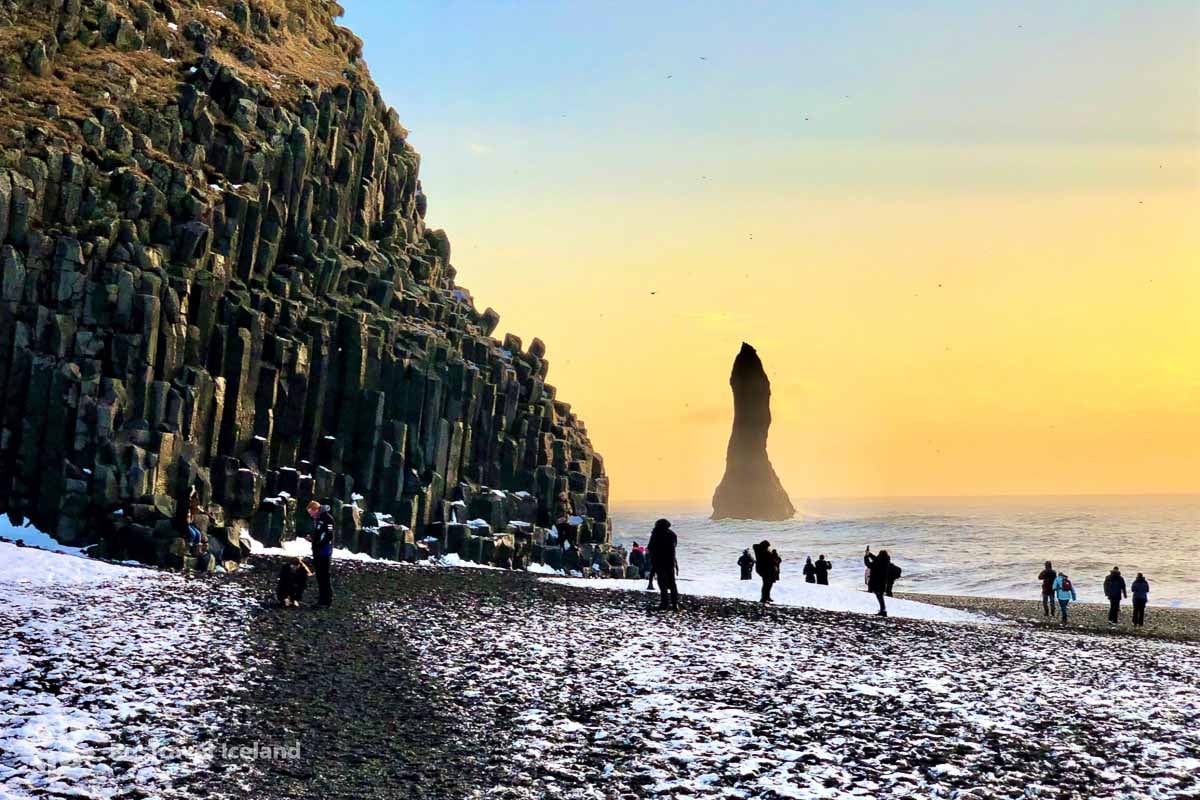
Our last stop of the day is to the magical black sands of Reynisfjara beach. Here the harsh waves of the icy-cold north Altantic crash across the stunning geometric basalt columns of the high cliffs. Explore the caves in the cliff, but beware the danger of the sneaker waves.
In the waves is the distance you will see the distinct shapes of Reynisdrangar sea stacks.

After our captivating journey, we’ll commence our return trip to Reykjavik, and should be back by the early evening, although this may vary depending on prevailing weather conditions and the state of the roads. Your accommodation for the 2nd night will be in Reykjavik city center.

The Golden Circle is Iceland´s most popular travel route. Diverse landscapes and wonderous geological features dot this region.
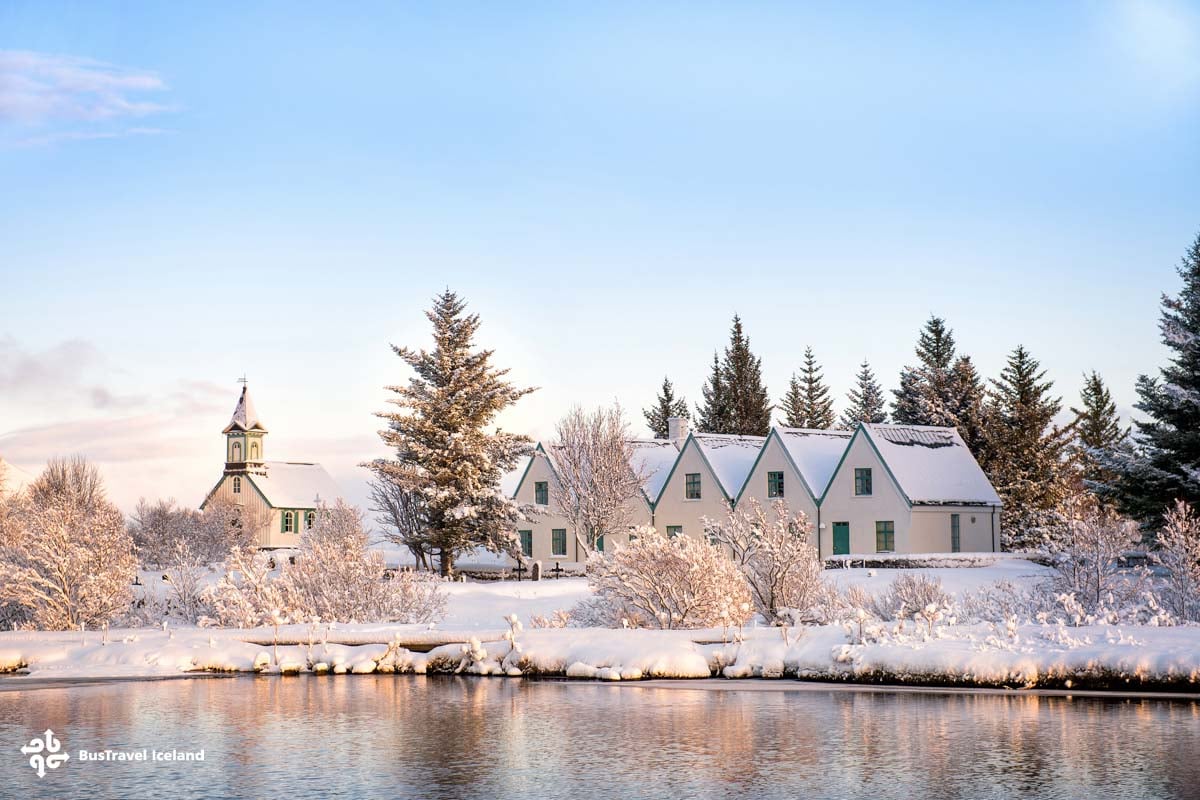
Our first stop is at Thingvellir National Park, a UNESCO World Heritage site of great historical and geological significance.
Thingvellir is most famous at the location of the mid-Atlantic ridge, where the North American and Eurasian tectonic plates separate and drift further apart with each passing year. This manifests itself most stunningly with Álmannagjá, a massive rift through which one can stroll, with sheer vertical walls to each side.
For Icelanders though, this site means more than natural beauty. Thingvellir is the site of Iceland´s first parliament, wehich first met here over 1000 years ago. Indeed, the name “Thingvellir” itself translates to “Parliament Plains,” underscoring its important role is the nation´s development.

Much of south-west Iceland is teeming with underground geothermal spots. It is necessary to bore deep into the ground to harness this energy. At Geysir though, the geothermal hot-springs manifest on the surface in many wondeful ways, including bubbling mud-pools and hot-pots. The most famous maifestation of this natural power though is of course the geyser itself. Strokkur geyser can be relied upon to erupt on cue every 5-10 minutes, ensuring you will have time to witness several eruptions during your visit.

Gullfoss is an immensely powerful waterfall on the glacial river Hvítá, fed by the looming Langjökull glacier to the north. It features a striking two-tiered drop: the upper falls plunging 11 meters (36 feet) and the lower tier dropping 21 meters (69 feet). Together, they create a powerful, staircase-like cascade.
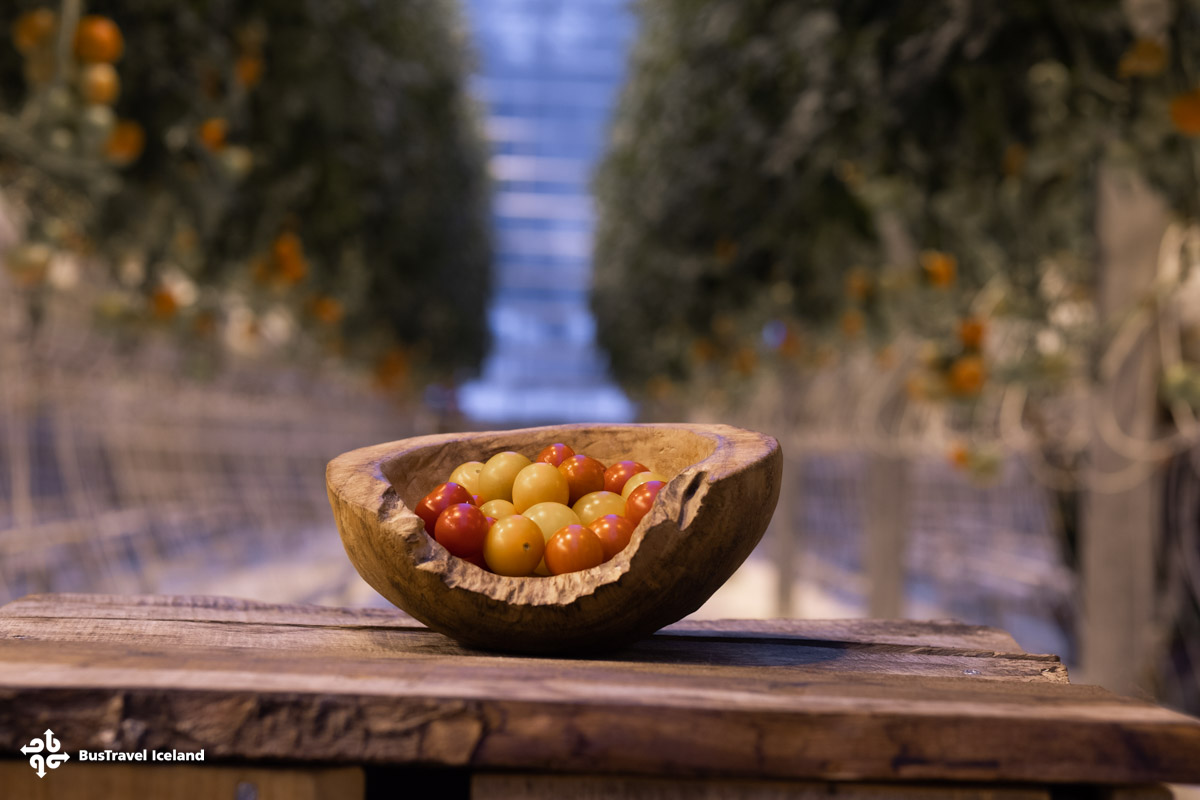
Friðheimar Farm is renowned for both its greenhouse and horse stables. Your visit begins at the farm’s famous stables, where you’ll meet the unique Icelandic horse. Known for their small stature, strength, and lively temperament, these remarkable horses will be showcased as your hosts demonstrate the five distinctive gaits that make this breed so special.
Next, you’ll explore the farm’s innovative greenhouse, which highlights Icelanders’ clever use of geothermal energy. Powerful sun lamps allow a variety of tomatoes to thrive despite the country’s famously harsh conditions. During a guided tour, you’ll learn about this fascinating process in an engaging and informative way. Afterwards, you’ll have the opportunity to taste the fresh produce and enjoy a leisurely lunch at your reserved table.
Please note: lunch is not included in the tour price.

After a day full of adventure, we make our way back to Reykjavík.











